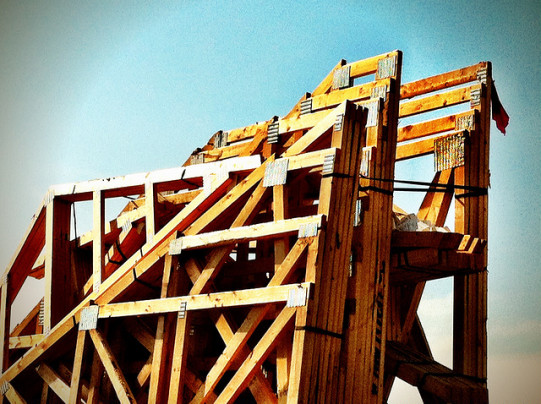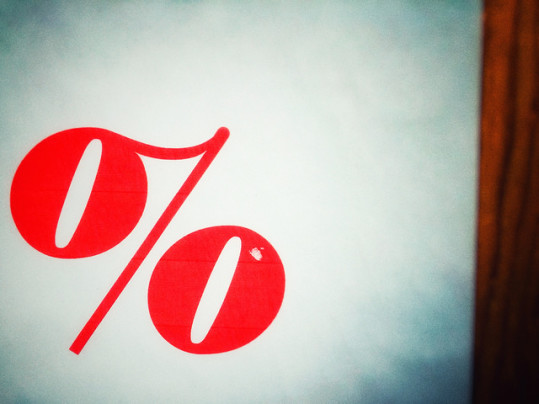According to the Mortgage Bankers Association’s Weekly Applications Survey, average mortgage rates were mostly flat last week. In fact, rates for 30-year fixed-rate loans with both conforming and jumbo balances were unchanged from one week earlier while rates for loans backed by the Federal Housing Administration and 15-year fixed-rate mortgages dropped. By the end of the week, average rates were as low as they’d been in nearly a year. That didn’t spur demand for mortgage applications, however, which fell 1.6 percent from the week before. Joel Kan, MBA’s associate vice president of industry surveys and forecasting, told CNBC that the declining demand for home purchase loans was mostly seen at the higher end of the market. “Purchase applications jumped up during the first full week of April and had effectively remained at that level, on an unadjusted basis, before falling this week,” Kan said. “The seasonally adjusted purchase index decreased to the lowest level since February, led by declines in applications for larger home purchase amounts.” Purchase volume was still almost 12 percent higher than one year earlier, despite the decline in jumbo loans. The MBA’s weekly survey has been conducted since 1990 and covers 75 percent of all retail residential mortgage applications. More here.
Archive for May 2016
Home Construction, Permits Rise In April
The number of new homes that began construction in April was 6.6 percent higher than the previous month, according to new numbers released by the U.S. Census Bureau and the Department of Housing and Urban Development. The improvement, which included a surge in multi-family construction, also included a 3.3 percent jump in the number of single-family homes that broke ground during the month. That’s good news for home buyers because any increase in new home construction boosts the number of homes available for sale, which helps balance the market and keeps prices from rising too quickly. Buyer demand has been high so far this spring but, because for-sale inventory has been low, prospective buyers have fewer homes to choose from and less room for price negotiation. Also in the report, there was an 1.5 percent increase in the number of authorized building permits to build single-family homes – which is a good sign that new home construction will continue to improve in coming months. The newly released figures outpaced economists’ expectations and were another sign that the economy and housing market, which had slowed to start the year, have begun to pick up. More here.
Builders Expect New Home Sales Bump
Builders are in an unique position to gauge home buyer traffic and demand for newly-built single-family homes. Because of this, their views are considered an important measure of the market’s health and future outlook. Each month, the National Association of Home Builders surveys builders and scores their responses on a scale where any number above 50 indicates more builders view conditions as good than poor. In May, the index was unchanged from the month before – remaining at 58 for the fourth-consecutive month. Robert Dietz, NAHB’s chief economist, says a closer look at the numbers shows there is a lot of optimism about the market going forward. “The fact that future sales expectations rose slightly this month shows that builders are confident that the market will continue to strengthen,” Dietz said. “Job creation, low mortgage interest rates and pent-up demand will also spur growth in the single-family housing sector moving forward.” In fact, builders are so optimistic that the index component measuring sales expectations for the next six months jumped three points to 65, while gauges of buyer traffic and current sales stayed flat. Regionally speaking, three-month moving averages show the Midwest and South up a point, the West unchanged, and the Northeast down slightly. More here.
Home Sales See Best 1st Quarter Since 2007
So far this year, there has been a lot of talk about higher home prices, declining affordability, and a lack of available homes for sale. But, according to the National Association of Realtors, demand remains strong and sales of previously owned homes just had their best first quarter since 2007. Lawrence Yun, NAR’s chief economist, says the housing market continues to make gains despite the challenges facing home buyers this spring. “The housing market continues to expand at a moderate pace in spite of the fact that home prices are rising too fast in some areas because of insufficient supply fueled by the grossly inadequate number of new single-family homes being constructed,” Yun said. “The good news is that pending sales in recent months have remained stable and should support a modest gain in home sales heading into the summer.” Yun is forecasting home sales to finish the year at their strongest pace in a decade. With mortgage rates still historically low and an improved job market, home buyers are showing that they aren’t deterred by higher prices. However, Yun cautions that there needs to be an increase in the number of homes for sale in order to meet the level of demand from buyers and keep prices affordable. More here.
Homeownership Remains Goal For Millennials
Housing and Urban Development Secretary Julian Castro says the idea that younger Americans aren’t interested in homeownership is a myth and that it is as much a goal for them as it was previous generations. “The American Dream of homeownership is as strong today as ever,” Castro told the National Association of Realtors Regulatory Issues Forum. “And perhaps the best news of all is that millennials are showing that their generation is just as committed to homeownership as their parents and grandparents.” Long seen as an essential part of achieving the American Dream, homeownership seemed to lose some of its appeal following the housing crash and financial crisis. Since then, a smaller than normal share of younger buyers have been active in the housing market – fueling the notion that they weren’t interested in owning a home. But, according to one recent poll cited by Castro, 40 percent of millennials plan to buy their first home sometime in the next year. That high level of interest, combined with recent improvements to the labor market and economy, should result in more of those potential buyers becoming actual buyers, according to Castro. In his view, student loan debt has been the main obstacle for young Americans hoping to purchase a home. More here.
Mortgage Rates Hover Near Three-Year Lows
According to the Mortgage Bankers Association’s Weekly Applications Survey, mortgage rates fell across all loan categories last week, including 30-year fixed-rate loans with both conforming and jumbo balances, loans backed by the Federal Housing Administration, and 15-year fixed-rate mortgages. Rates were down from the week before and started the week at their lowest point in three years. Lynn Fisher, MBA’s vice president of research and economics, told CNBC that mortgage rates continue to defy expectations. “Despite expectations that rates would slowly rise this year, the 30-year fixed rate last week was 18 basis points lower than a year ago, continuing to provide a favorable rate environment for the housing market,” Fisher said. Favorable rates, however, failed to spur much demand for mortgage loan applications. In fact, mortgage application demand was essentially flat from the week before, with both the refinance and purchase index up less than one percent. On the other hand, when compared to last year, refinance demand is now up 23 percent and applications for loans to buy homes have increased 14 percent. The MBA’s weekly applications survey has been conducted since 1990 and covers 75 percent of all retail residential mortgage applications. More here.







